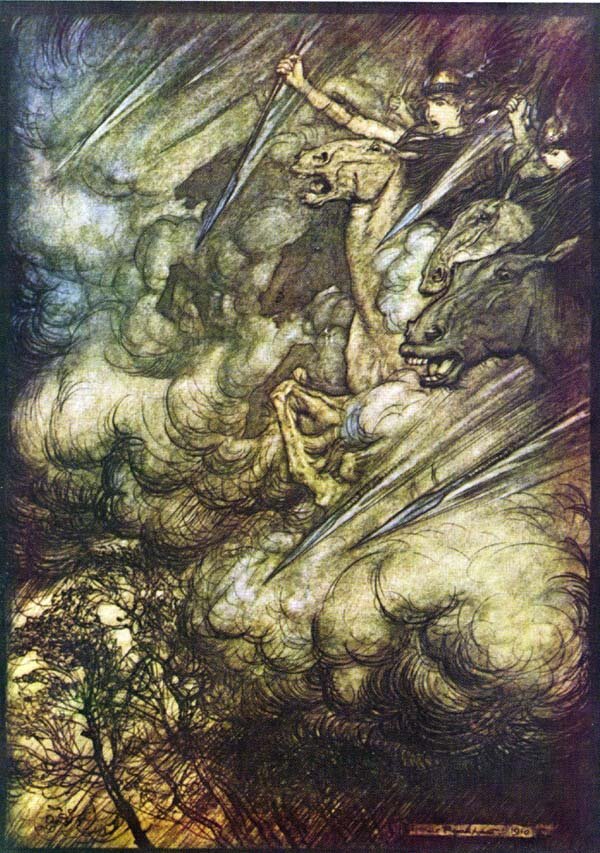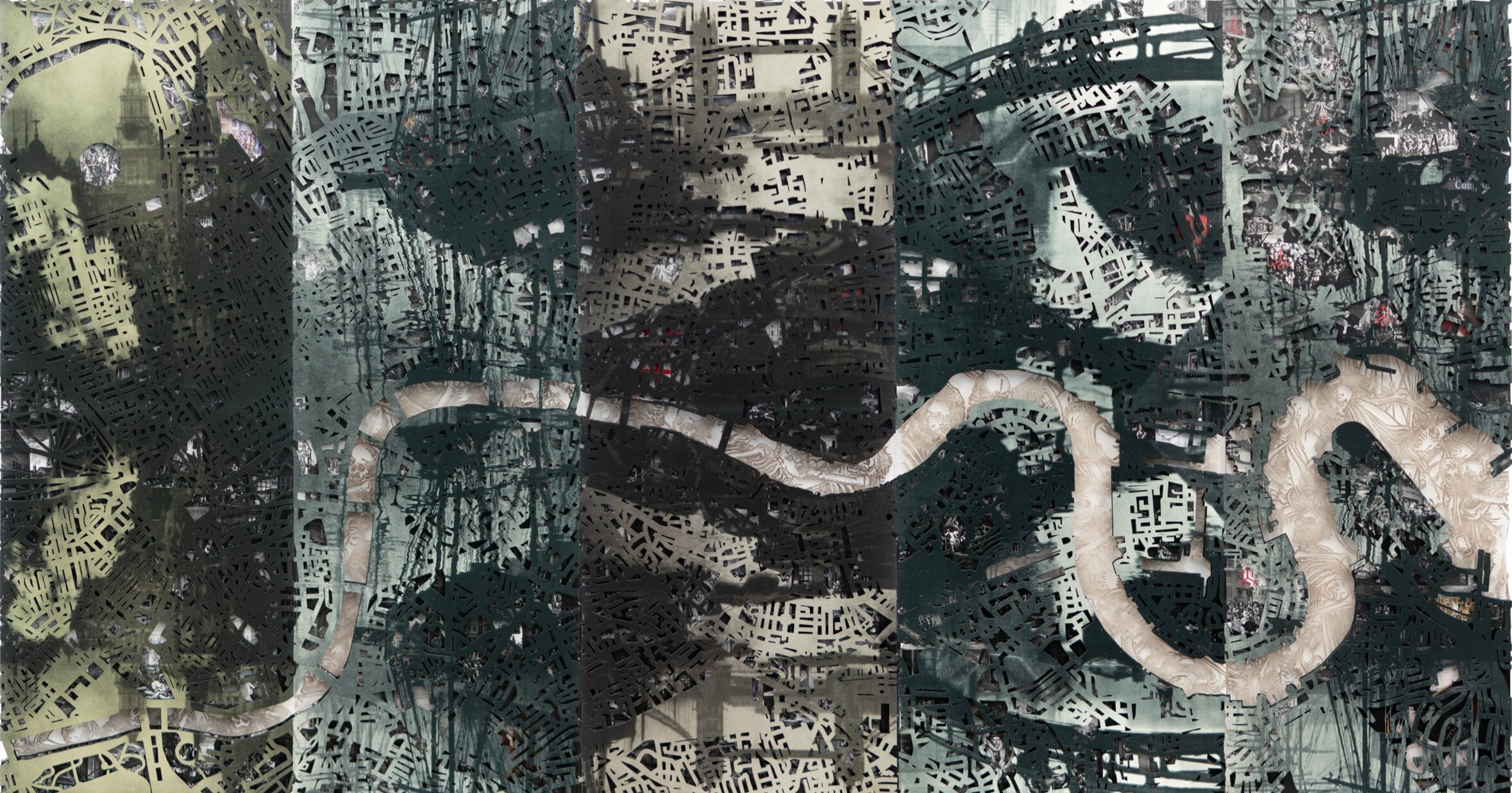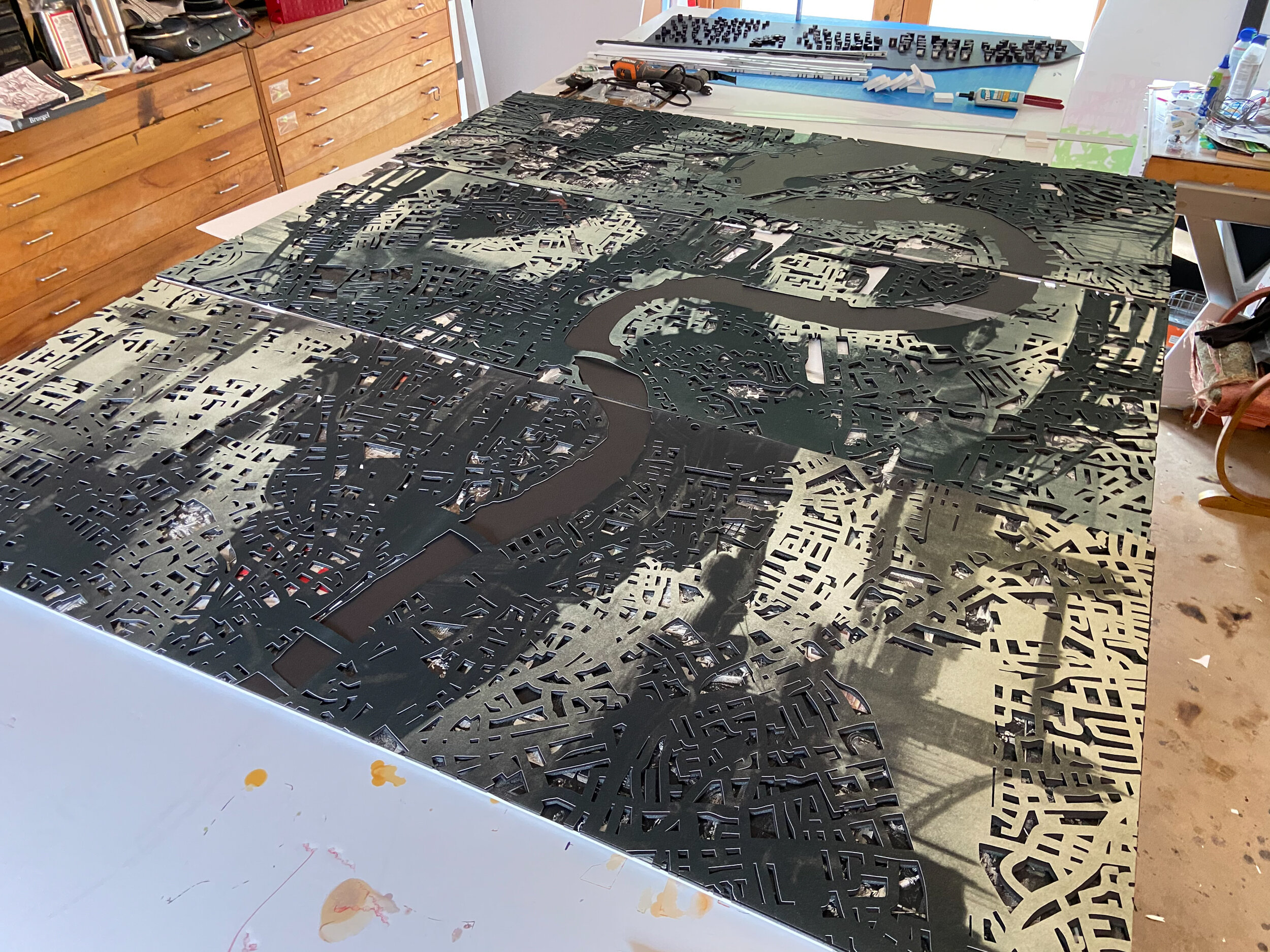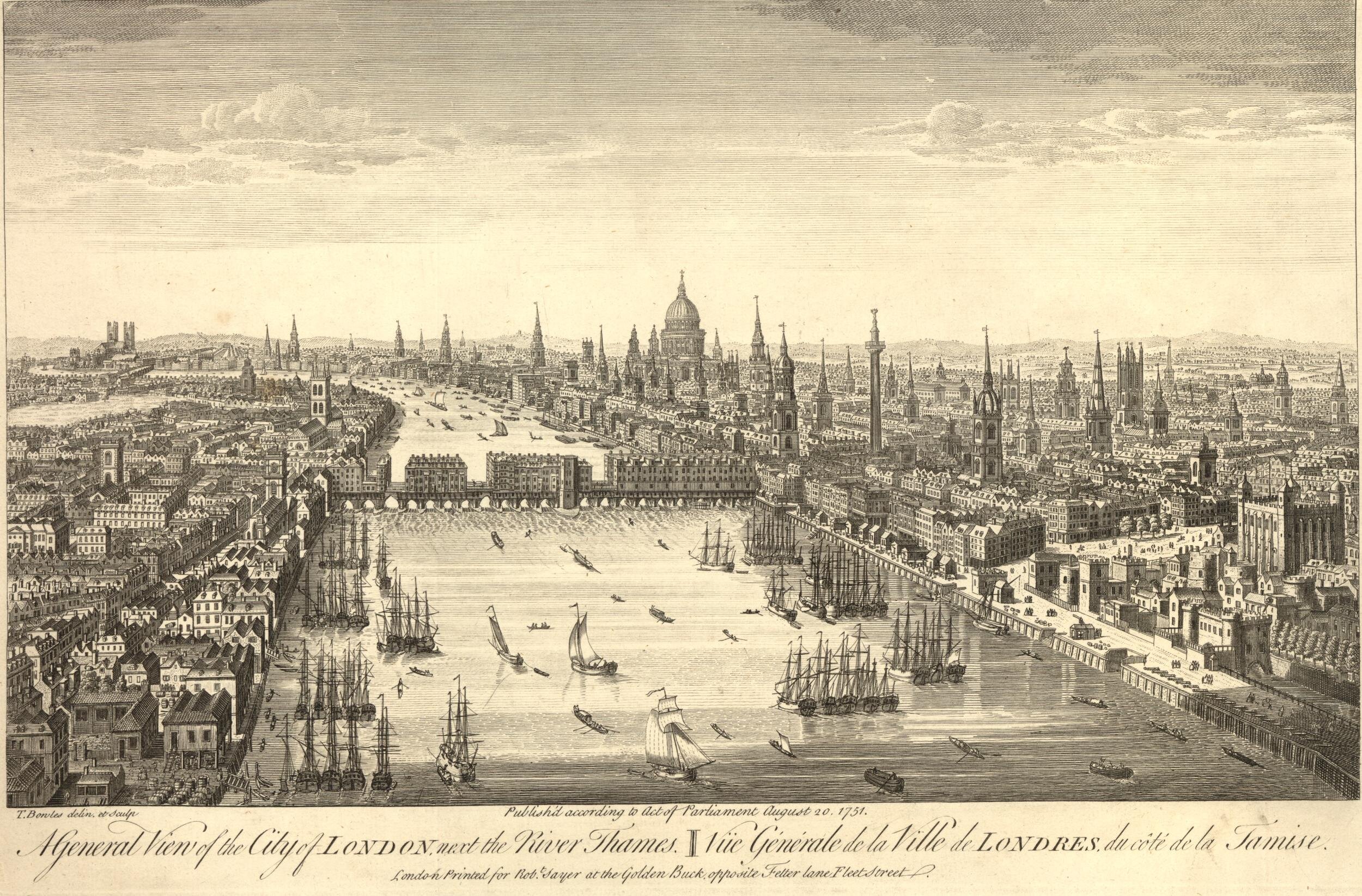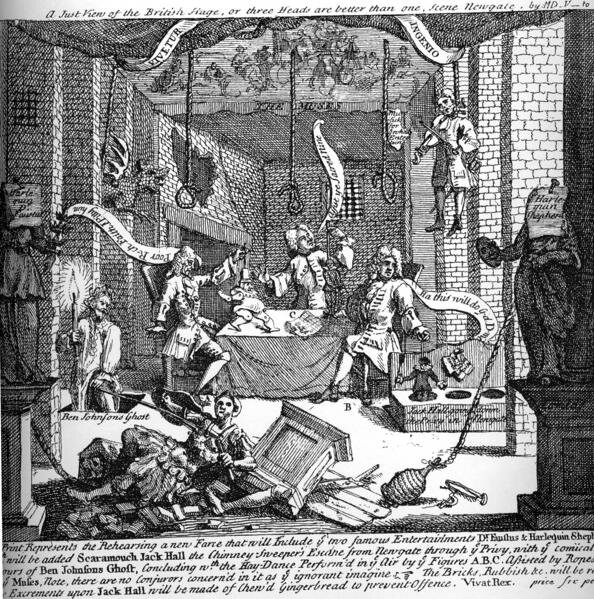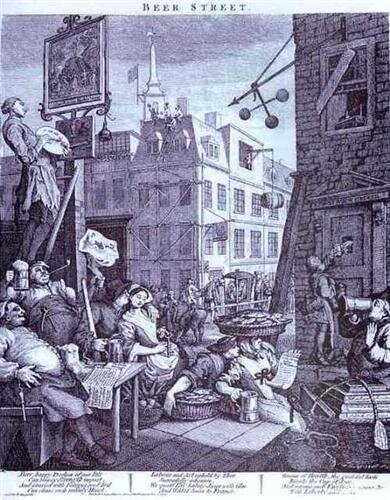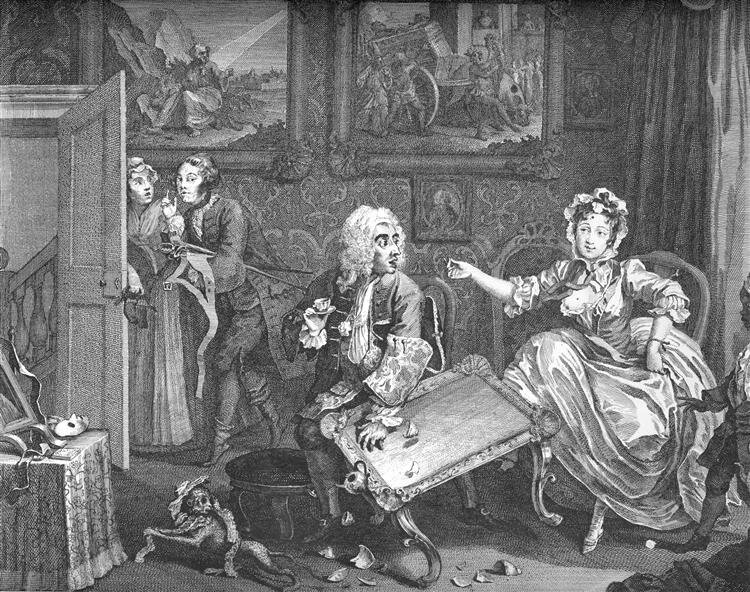Matthew Picton | Eschatologies | Viewing Room
Matthew Picton
The Ring, 2020
archival printed material and museum board
42 x 42"
Inquire >
Source Material & Artist Statement
The Ring Cycle
The epic narrative of Richard Wagner’s musical drama, “Der Ring des Nibelungen” (The Ring of the Nibelungen, or The Ring cycle) is a story of strife and conflict among the gods, heroes and mythological creatures provoked by their individual desires to possess a magic ring that will grant domination over the world. The last movement of the opera, the Götterdämmerung (incidentally the name given to the last few days in Hitler’s bunker), has a suitably cataclysmic and apocalyptic finale.
The artwork combines the threads of related imagery that bridges the mythological with figures, literature, and music in Germany’s complicated history. The surface imagery of the sculptural artwork combines visuals of Albrecht Dürer’s (1471-1528, German painter and printmaker) Battle of The Angels with the illustration The Ride of The Valkyries by Arthur Rackham (1867–1939), an English artist best-known for illustrating for Rip Van Winkle, Peter Pan in Kensington Gardens, and Fairy Tales of the Brothers Grimm. Beneath these images are a dissected print of the sculpture Dresden 1945 made in 2012. The previously made sculpture included related themes and was created from a burnt musical score of Wagner’s “Ring” cycle. His work came to be used by the Nazis for the glorification of the German myth, born out of revolution and influenced by ideological and destructive fantasies.
The city of Dresden, Germany was completely destroyed by fire on the night of February 13, 1945, and the entire city was incinerated. Wagner was a resident in Dresden during the 1840s and became involved in the rebellion which culminated in the revolution of 1849. He was eventually forced into exile in Switzerland where he finished the “Nibelungen”. While in Dresden he wrote passionate articles in the Volksblatt, a newspaper founded in 1869 as the paper of the Social Democratic Workers' Party of Germany. Wagner urged people to revolt and took an active part in the fighting. During this time he became close friends with anarchist and revolutionary Mikhail Bakunin (1814-1876) a Russian revolutionary anarchist and founder of collectivist anarchism. Bakunin frequently talked of the desire to burn Paris to the ground to purify society, something that became a central element in the “Ring” cycle. He was a major influence on Wagner at the time of the writing of the “Ring of the Nibelungen,” as were the writings of Ludwig Feuerbach (1804–1872), a German philosopher and anthropologist best known for his book The Essence of Christianity, which strongly influenced Charles Darwin, Karl Marx, Sigmund Freud, Friedrich Engels and Friedrich Nietzsche. Of course, ironically, the city Wagner conceived the great work in was itself totally consumed by fire. Fortunately, Wagner and Bakunin were not alive to witness the horrors that ideology later realized in the 20th century.
-Matthew Picton, 2020
“The poignancy of each sculpture in conversation with each other resides not only in Picton’s empathetic mapping of subjective experience and the stirring similarities of those experiences across continents and centuries, but in their relevance today. Together, the sculptures capture the complexities of a lesson that seems to be absorbed and then forgotten by each passing generation: without a thorough knowledge of history (not only our own), we are fated to repeat it.”
Matthew Picton
The Wrath of God, 2019
archival print and pins
34 x 22”
Inquire >
Reference, Source Material & Artist Statement
The Wrath of God
The sculpture contains the dual imagery of Albrecht Dürer’s (1471-1528, German painter and printmaker) St Michael Fighting the Dragon and a portrait of the actor Klaus Kinski in his portrayal of Lope de Aguirre in Werner Herzog’s film, “Aguirre, the Wrath of God”. The sculpture, The Wrath of God, encapsulates the duality inherent in the imposition of Christian faith upon the New World.
The Herzog film is based on the story of the psychopathic monstrosities of Aguirre during his quest for the mythical city of El Dorado in 1519. In the film, Klaus Kinski plays the conquistador Lope de Aguirre as a destroying angel, a representative in opposition to the missions of medieval Christianity. Aguirre says, “I am the wrath of God,” personifying the megalomania and destructive fantasies of a human with unlimited power over others.
– Matthew Picton, 2020
Albrecht Dürer (1471–1528), Saint Michael Fighting the Dragon, c. 1496/1498, woodcut, 16 3/8 x 11 1/4 in,
Collection National Gallery of Art
Matthew Picton
The Dance of Death, The City of London, 2020
archival printed material and foam core
72 x 137" unframed wall installation
Reference Material + Statement
The Dance of Death - The City of London
The City of London has historically derived its great wealth from a ruthless extraction of capital from the British Empire’s Colonial acquisitions, an activity that continues today in a secretive and manipulative fashion via a spidery network of offshore jurisdictions. For several centuries conditions in the city were notorious for the squalor and depravity of existence. It is no wonder that the citizens of this dark city were so easily able to inflict suffering and death all over the world, and with such a callous indifference to the fate of those they came to dominate.
London was home to the notorious East India Company, originally formed to conduct trade in the Indian Ocean area and which later took control of large parts of the Indian subcontinent, and colonizing Hong Kong and parts of Southeast Asia. The company was led by Robert Clive and directly responsible for the first great famine of Bengal in 1770. A statue of “Clive of India” still exists outside the foreign office to this day. Under Prime Minister Lord Palmerston (1784-1865), the British went to war with China to protect the opium trade, and long after the abolition of slavery the city was still financing the East India Company.
London was the city to inspire revolutionary, socialist, historian and economist Karl Marx (1818–1883) to write "Das Kapital", writer and social critic Charles Dickens (1812–1870) to famously document its squalor, political satirist William Hogarth (1697–1764) to illustrate the depravity of existence, and by the Empire’s zenith in 1902, author Jack London (1876-1916) to write the book “The People of The Abyss”.
The sculptural artwork includes imagery from historical depictions combined with modern street maps. During the 18th century, Hogarth created a series of engravings depicting the corruption and debauchery of London, and some of his images form the underlying layer of this piece. These images have been combined in some places with details of the photographs Jack London took in 1902. There are additional images of The East India Company headquarters, Sir Thomas “Auditor" Smythe (1558-1625), the founder of the company, "Clive of India" (1725-1774) and images of “The South Sea Bubble” (1720), the first British financial collapse that ruined thousands of investors. The River Thames contains cut out forms from German artist Hans Holbein’s (1497-1543) The Dance of Death, 1523-25. Documentation of London in 1902 by American photographer Alvin Langdon Coburn (1882-1966) are included at a greatly enlarged scale, with a layer of extensive cut outs in the shapes of modern London street networks that conceptually connect the past and present.
-Matthew Picton, 2020
Recent Commission - Facebook (Seattle, WA)
Facebook Commission
Matthew Picton is working on a large-scale commission for Facebook’s reception area (Seattle, WA). The artwork will be approximately 10 x 21 feet and will layer Seattle's complex street network with imagery sourced from the city's rich cultural history. For example, Picton references David Guterson's book Snow Falling on Cedars, which investigates the trauma of the Japanese population during World War II in Seattle. Other sources include novels that comment on the Battle of Seattle in 1999, Truth Like Sun by Jim Lynch, the graphic novel Black Hole by Charles Burns and excerpts from the Hate comics by Peter Bagge. Other layers will include imagery relating to the Seattle fire of 1889, the old Japantown pre World War II and other images from earlier in the 20th century will be visible through layers of material.
Picton has worked on a number of private and public commissions. If you are interested in finding out more about commissioning a work from Picton, please contact us for further details.



